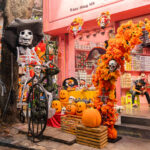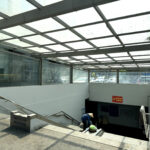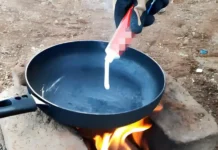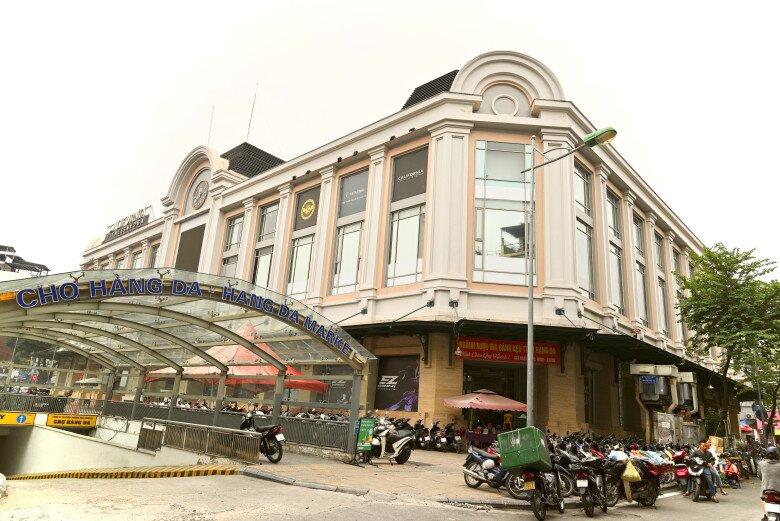
Hàng Da Plaza today. The modern shopping mall, a far cry from the bustling traditional market it replaced, stands as a monument to the area’s transformation.
With an investment of nearly VND 250 billion, Hàng Da Plaza is a unique blend of traditional market and modern shopping mall, operating since late 2010. Looking at the sleek exterior of Hàng Da Plaza, it’s hard not to reminisce about the old Hàng Da market, once a vibrant hub of commercial activity.
Located in the heart of Hàng Da Street, Cửa Đông Ward, Hoàn Kiếm District, Hàng Da market is a cultural and historical landmark in the capital city. Before delving into the market’s story, it’s worth noting the street’s intriguing past. During the Nguyễn Dynasty, this area belonged to Yên Nội village, Thuận Mỹ district, Thọ Xương district. Locals referred to it as “Phố Thầy Bói” (Fortune Teller Street) due to the presence of fortune tellers outside the Tam Thánh Temple (or Vũ Du communal house).
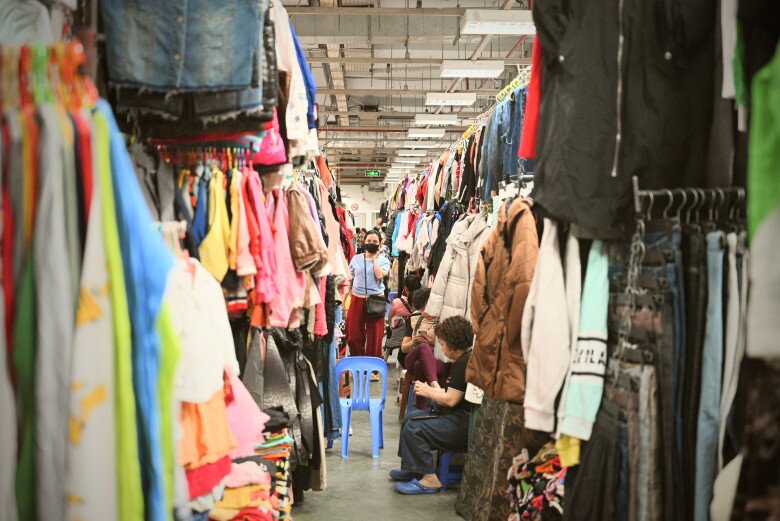
A rare glimpse into the underground market hidden beneath the bustling streets of the ancient quarter on a weekend.
In the early 20th century, the French reorganized the city and renamed the street Rue des Cuirs, translating to “Street of Leather” in English. However, at that time, Hàng Da Street did not specialize in leather goods production and sales like Hàng Điếu or Hà Trung streets. In fact, only a few Chinese merchants owned tanneries in the outskirts, where they stored raw materials, including self-tanned leather, leather from the Thụy Khuê Tannery, or imported leather. Skilled craftsmen from other areas would frequent these workshops to purchase materials for their creations.
It wasn’t until 1937 that the Hàng Da market was constructed, but even then, only a handful of vendors sold leather goods, with most stalls offering food and groceries. It was only after the Japanese coup against the French in 1945 that the name Hàng Da officially stuck with the street.
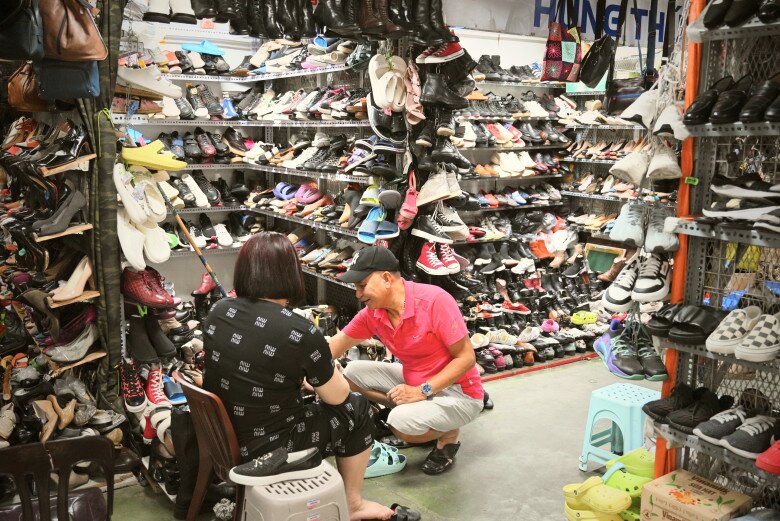
The secondhand shoe area in Hàng Da market—a testament to the evolution of commerce in the area.
Hanoi locals often get nostalgic when recalling the old Hàng Da market before the construction of the five-story building in 2010. It was rightfully dubbed a “shopping paradise” back then, as it offered an extensive range of products across four distinct sections: fresh food, food stalls, clothing, and miscellaneous goods. It was common knowledge that one should browse slowly and only inquire about prices when genuinely interested in a purchase, as haggling and bargaining were part of the unique charm of this market. Despite the need for a “steel spirit” when navigating this market, it thrived in the early 2000s as one of the busiest and most vibrant marketplaces in the city.
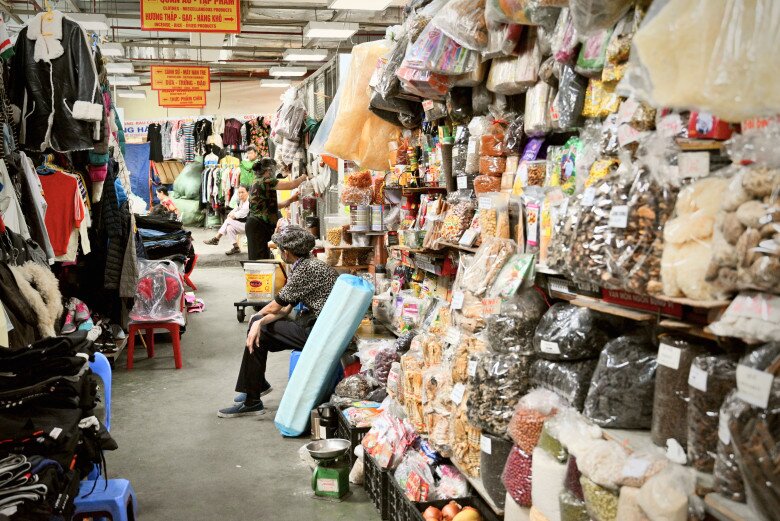
A small corner at the end of the market is dedicated to a diverse array of dry food products.
When the decision was made to construct Hàng Da Plaza, the old market was demolished, and many vendors chose not to return when the new, modern marketplace opened its doors. Hàng Da Plaza, with its conveniences and grandeur, may not appeal to those who cherished the traditional, bustling atmosphere of the old market, with its lively haggling and unique, intimate charm. Additionally, the layout of the new market, with its underground location and tucked-away main entrance, doesn’t lend itself to a convenient shopping experience.
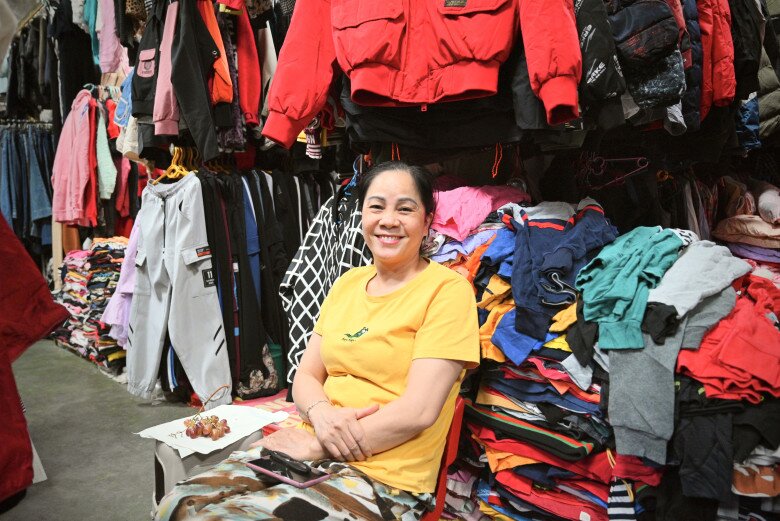
A friendly vendor showcases her latest winter clothing collection, hoping to attract customers.
In recent years, the market has primarily become a hub for secondhand goods, with a small section at the end selling food, dry goods, and ceramics. Visitor numbers have dwindled, and most of those who do come are foreign tourists curious about an underground market in the heart of the ancient quarter. Compared to other secondhand clothing markets like Đông Tác, the goods at Hàng Da tend to be of higher quality and slightly more expensive.
Faced with competition from other markets and a decline in customer interest, many vendors struggle with slow sales and empty shops. Some don’t even bother opening their stalls, knowing there will be few, if any, customers.

The ceramics section offers a wide range of products, from local Bát Tràng pottery to Japanese imports.
Ms. Phượng, a vendor who has been operating in the market for over 20 years, shared her thoughts: “I remember the old days when I had to wake up early to set up my stall. Now, I can sleep in, and there are still no customers by noon. Every few months, a newspaper writes about the market’s decline, which doesn’t help attract new shoppers. I’m getting older, and I’ve been here for so long that I’m just holding on, unlike many other vendors who have moved on to other places.”
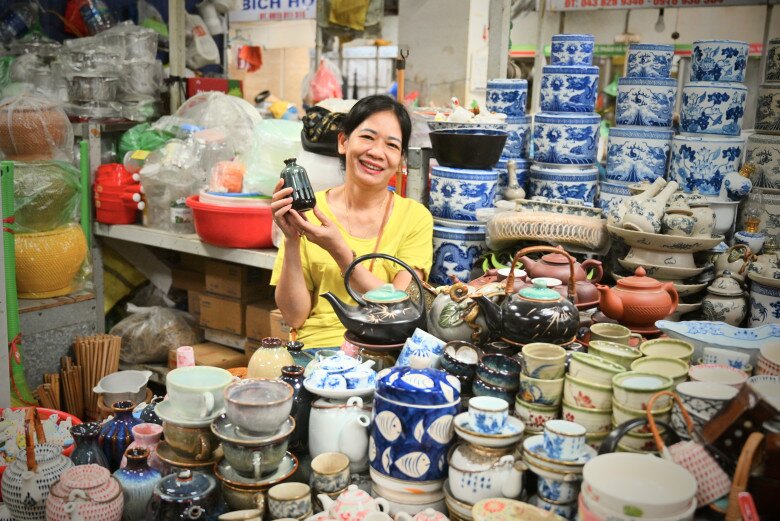
A vendor, who wishes to remain anonymous, humorously requests: “Please write an article to bring more customers to our market!”
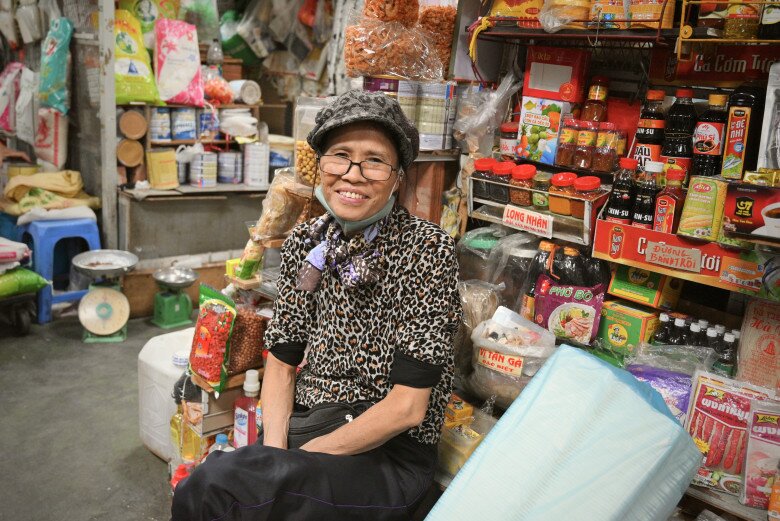
Mr. Thủy patiently awaits his first customers of the day, even as noon approaches.
While we cannot turn back time, we can hope for a suitable solution to revive this traditional market’s glory. As times change, the Hàng Da market may have lost its status as the busiest shopping destination in the capital, but it remains a cherished memory for those who experienced its unique, old-school charm. The heart of Hanoi beats with the memories of a simpler time, when the Hàng Da market was a bustling, vibrant hub of commerce and community.
The Underground Food Market in Hanoi: A Culinary Adventure for Just 50,000 VND
The food court within the market is a bustling hub during lunchtime, attracting a steady stream of diners with its tantalizing array of affordable delights. From the classic Vietnamese duo of bún đậu mắm tôm and nộm bò khô to comforting bowls of phở and cháo, this culinary hotspot has something to satisfy every craving.



























